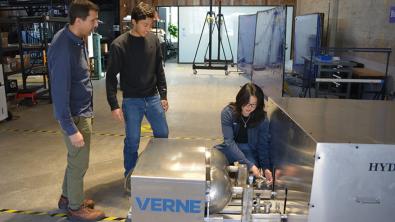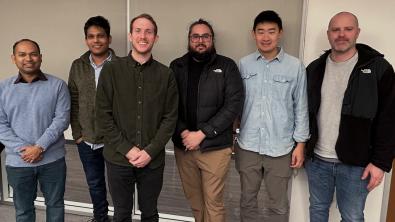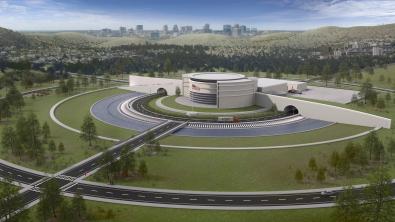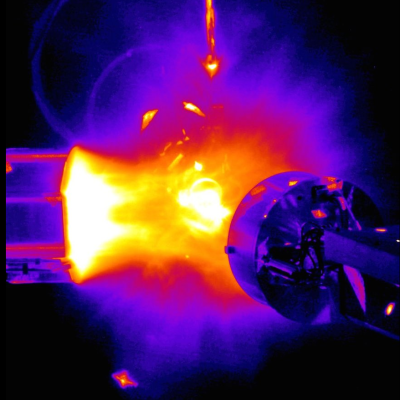Global energy production, storage and transport are both essential and environmentally impactful. New energy sources, managing and capturing the biproducts of energy expenditure, and repurposing of carbon dioxide are issues of national and global importance. Researchers at LLNL continue to broadly invent novel technologies that intersect at materials, mechanical, electrical, biological and chemical interfaces. Inventions in this portfolio range from bioreactors, to materials, to batteries, motors and new systems.
Portfolio News and Multimedia
LLNL and Verne have demonstrated a novel pathway for creating high-density hydrogen through a research program funded by Department of Energy’s ARPA-E. The demonstration validated that it is possible to efficiently reach cryo-compressed hydrogen conditions with liquid hydrogen-like density directly from a source of gaseous hydrogen.
Verne began working with LLNL in 2021 through a Strategic Partnership Project to test Verne’s tanks at LLNL’s cryogenic hydrogen fueling facility. Collaborations progressed through two Cooperative Research and Development Agreements in 2023-24 facilitated by LLNL’s Innovation and Partnerships Office (IPO).
In a record setting year for Lawrence Livermore National Laboratory (LLNL), four teams of LLNL researchers will attend the Department of Energy’s (DOE) Energy I-Corps (EIC) Cohort 20 this spring.
The EIC is a key initiative of the DOE’s Office of Technology Transitions, and facilitated at LLNL by Hannah Farquar from the Innovation and Partnerships Office (IPO). Established in 2015, EIC pairs teams of scientists with industry mentors to train researchers in moving DOE lab-developed technologies toward commercialization.
Focused Energy and Lawrence Livermore National Laboratory (LLNL) today announced the signing of a Cooperative Research and Development Agreement (CRADA) to develop a model simulating the behavior of low-density foams wetted with liquid deuterium and tritium during implosion.
This follows a press release from Pacific Fusion just a week earlier where they announced that they have signed a CRADA with the Lab to build on National Ignition Facility's success in achieving ignition.
These collaborations with LLNL enable a new era of applied fusion. The CRADAs were facilitated through LLNL’s Innovation and Partnerships Office.




